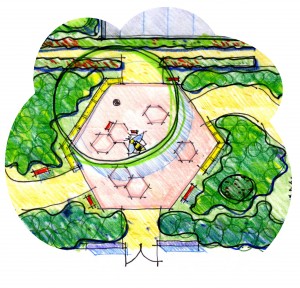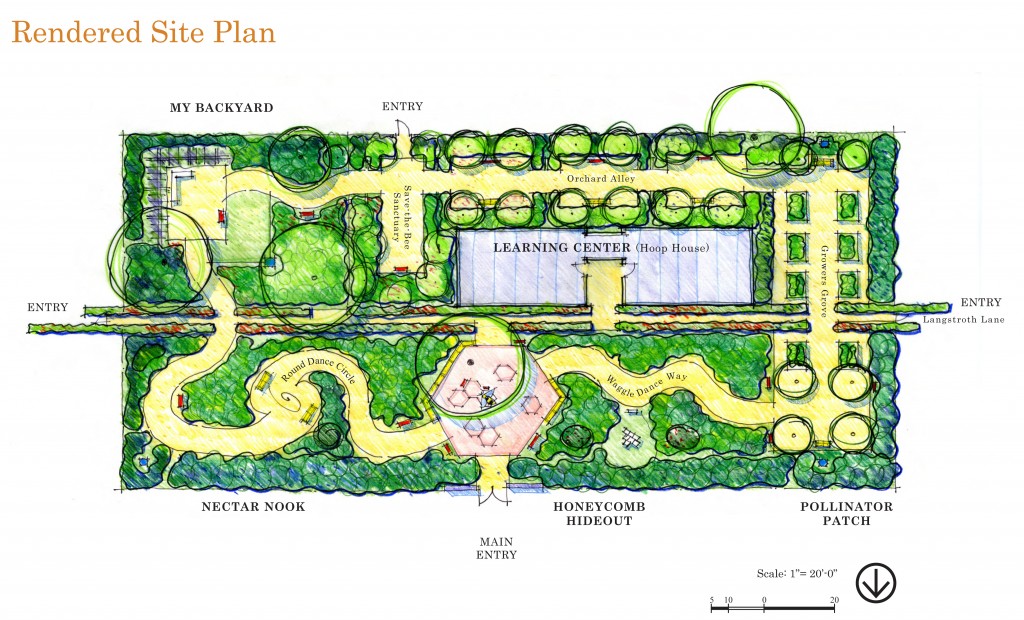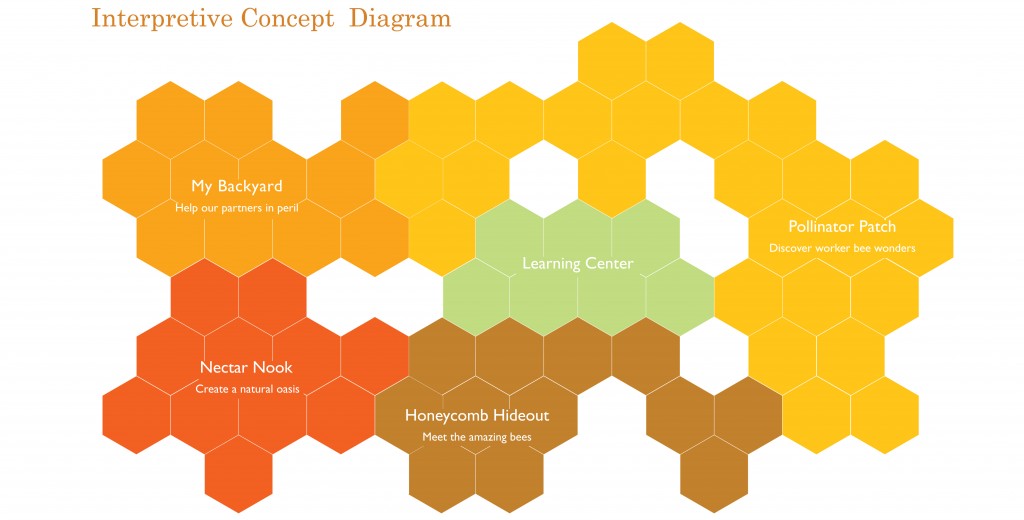Set to open to the public on September 11 of this year is the winning design of the Häagen-Dazs-UC Davis Honey Bee Haven Design Competition located at the Honey Bee Research Facility on the UC Davis campus. The winning team from Sausalito, CA was made up of a variety of professionals including landscape architects, exhibit planners and an interpretive planner. The health of honey bee colonies has been of concern recently in part due to Colony Collapse Disorder (CCD). While they aren’t a native species, they are economically important because they pollinate over 100 agricultural crops valued at $15 billion. Their economic impact is highlighted by the fact that more corporations are taking an interest in the value of ecosystem services and sponsoring competitions such as this. The Honey Bee Haven garden is just the first in a series of planned, interconnected gardens at UC Davis, each designed for a specific pollinator. Another future garden will be called the ‘Native Bee Nirvana’.
The goal of the Honey Bee Haven garden was to provide year-round food sources for honey bees. Some of the design requirements for the half acre garden were to provide a variety of plants and a bee-accessible water source while following the “River-Friendly Landscape Guidelines” (PDF), while keeping hardscaping to a minimum. One of the more interesting requirements was to “Inspire the development of honey bee gardens in a variety of settings, including backyards, public gardens, agricultural easements, urban rooftops, etc.” View the Honey Bee Haven Design Parameters (PDF) for a full description of the competition requirements, an excellent plant list, site description, photos and other guidelines.
The winning team’s design proposed a story-driven approach. “The interpretive storyline—what honey bees are, what they do, why they’re in trouble, and how we can help—drives our garden design. From a visitor experience perspective, our approach aims to foster appreciation for the amazing adaptations of honey bees and the invaluable service they provide, build empathy for their plight, and inspire action to help save them.”
The team designed four interconnected gardens called Honeycomb Hideout, Pollinator Patch, My Backyard and Nectar Nook, connected by thematically named paths which serve as the route for their story telling experience. Along the route are gathering spaces designed for educational experiences such as tours or chats with entomologists, ID labels about plants and interpretive graphics. The Honeycomb Hideout is true to it’s name by being hexagonal in shape, with a large, model bee and large blooming flowers that create a bees perspective. The Pollinator Patch demonstrates the pollination process in regards to agriculture and includes familiar food plants to connect the bees to what we eat. My Backyard offers a look at how visitors can transform their own yards. The garden is designed to conform with a normal backyard instead of looking more wild and demonstrates how yards can be trim and groomed but still offer honey bee habitat. The Nectar Nook meanwhile offers a much more of a wild and natural look.
It’s easy to see why this design won the competition. It’s very well thought out with great attention paid to the many aspects of bee behavior, lifecycle and habitat needs. Make sure to visit the full competition entry where you can read a detailed description of each garden, see a full planting plan, maintenance program and other details.
Further Reading::
Honey Bee Haven:: UC Davis Department of Entomology
Honey Bee Haven Design Parameters (PDF):: UC Davis Department of Entomology
European Honey Bee (Apis mellifera):: Animal Diversity Web









The incorporation of bee habitat into a conventional yard framework is a valuable contribution.
I attended a Winter symposium at Michigan State University last Saturday. Went to the class about bees and that we should all have a bee haven in our yards. I want to build one but I can’t locate the directions to build. I was told to visit website xerces.org. I could not find the info. Can you direct me to the right place. Thank you very much
Hi Bernadette, congratulations on wanting to create bee habitat! You can find plant resources for your region on my blog here https://www.metrofieldguide.com/?page_id=292 which includes lists for pollinators from the Pollinator Partnership.
You can also find resources for designing for pollinators also on my blog here https://www.metrofieldguide.com/?page_id=509 which includes links to some of the Xerces Society publications.
The Xerces Society just published a brand new book as well that will be sent out later this month that should be an excellent resource. http://www.xerces.org/announcing-the-publication-of-attracting-native-pollinators/